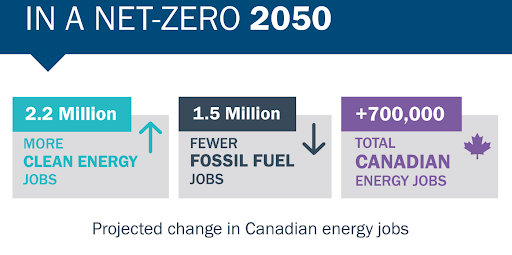You probably followed some of the news about the big climate science report approved by the world’s governments on Monday. The coverage was alarming enough — “final warning” was a common headline — but if you read the report itself, you will have run across a curious concept called “overshoot.”
This is not the type of “overshoot” most of us are familiar with. Earth Overshoot Day, for example, is announced each year along with estimates for how many planets it would take to sustain our current burn rate.
In the world of climate quants, “overshoot” has a much more specific and insidious meaning — we’ll keep burning fossil fuels and blow through our purported target of 1.5 degrees, but hope to lower our planet’s temperature later.
How on Earth might we pull that off? It’s a very good question given that most plausible pathways assume staggering amounts of overshoot. The only answer on offer is that we’d pull it off by pulling carbon out of the atmosphere.
The theory is we’ll cut climate pollution to net zero and then employ “negative emissions” at a planetary scale using methods of carbon dioxide removal (CDR in the lexicon of the climate quants). Those methods? TBD.
"We rely so much on these models for policymaking but policymakers don't understand the assumptions at all," says Olivier Bois von Kursk, a Montreal-based analyst working on energy transition scenarios at the International Institute for Sustainable Development. "The world is really betting on negative emissions in the future.”
There are 1,200 scenarios scoured from modellers around the world and reviewed by the Intergovernmental Panel on Climate Change (IPCC). Only 26 keep us below 1.5 degrees with low overshoot and feasible assumptions about reforestation and carbon sequestration.
One example of negative emissions cited by the IPCC involves pulling 11.5 gigatonnes out of the sky every year by 2050 using bioenergy with carbon capture and storage (BECCS). The notion is that we’d grow crops and then burn them in energy plants, capture the carbon emissions and bury them deep underground. “That would require farmland one or two times the size of India,” says Olivier.
There’s been a fractious debate among climate experts about the use of overshoot in previous reports — a kind of fine print beneath the pathways showing how to meet the temperature targets adopted by politicians.
There’s just so little time and carbon budget left that modellers resort to overshoot and negative emissions to make the numbers pencil out. But time is not on our side: “In the near term,” says the IPCC, “global warming is more likely than not to reach 1.5 C even under the very low GHG emission scenario.”
Those arguing for more transparency underline the irreversible impacts from any time spent in overshoot. And they point to the incredible gamble involved: fine print can’t tell us if it will ever be possible to lower the temperature by removing gigatonnes of carbon dioxide every year, let alone what that would cost.
And, to its credit, the latest synthesis report by the IPCC boosted the font size considerably. The authors explicitly outlined what’s required to avoid overshoot — very deep emissions cuts this decade. Much deeper than we’re planning. Although the message is explicit, the text remains dense:
“Limiting warming to 1.5 C (>50 per cent probability) with no or limited overshoot or limiting warming to 2 C (>67 per cent) assuming immediate action imply deep global GHG emissions reductions this decade (high confidence),” say the IPCC scientists.
When they say “deep,” the experts are not exaggerating. And they provided several illustrations. The black line on the left shows greenhouse gas emissions since the turn of the century. Red shows what’s likely with the laws and policies implemented to date. Green and blue show the drastic course-reversal that’s needed.

Here’s how that looks for the main greenhouse gas — carbon dioxide. You’ll note that stabilizing the temperature around 1.5 C or 2 C (without major overshoot) still requires emissions to dip below net zero and into negative emissions territory.

An ‘Acceleration Agenda’
Alongside the release of the IPCC report, UN Secretary General António Guterres unveiled an “Acceleration Agenda” to achieve deep greenhouse gas reductions. “We have never been better equipped to solve the climate challenge,” he said.
And it’s true that the IPCC authors concluded with high confidence that “feasible, effective, and low-cost options for mitigation and adaptation are already available.” They point to “widespread electrification” with solar and wind having the most (and cheapest) potential, along with “a substantial reduction in overall fossil fuel use.”
Global emissions could be cut in half this decade, using measures that cost less than US$100 per tonne. The IPCC provided a handy graphic illustrating the options at hand.

The Acceleration Agenda leads off with a call to hit the “fast-forward button” on timelines. For developed countries, it means accelerating the net-zero timeline “as close as possible to 2040.”
“Every country must be part of the solution,” said Guterres. “Demanding that others move first only ensures humanity comes last.” Canada’s Environment and Climate Change Minister Steven Guilbeault says he will take a “long, hard look” at the idea.
The Acceleration Agenda also calls for developed countries to ensure net-zero electricity by 2035. The Liberal government is pushing forward legislation to that effect. But it is not yet the law of the land — we’ll have to see how it emerges from the sausage-making process and whether it gets to the finish line ahead of the next election. Conservative environment critic Gérard Deltell notably declined a request to comment.
Other action items aim right at the crux of climate controversy in Canada. The IPCC says that “projected CO2 emissions from existing fossil fuel infrastructure without additional abatement would exceed the remaining carbon budget for 1.5 C.”
(“Abatement” is a euphemism for CCS — which the IPCC includes only if it “substantially reduces the amount of GHG emitted throughout the life cycle.” Carbon capture in the oilpatch only addresses the small percentage at the beginning of the life cycle.)
And so, the UN secretary general called for:
- Ceasing all licensing or funding of new oil and gas.
- Stopping any expansion of existing oil and gas reserves.
- Establishing a global phasedown of existing oil and gas production compatible with the 2050 global net-zero target.






